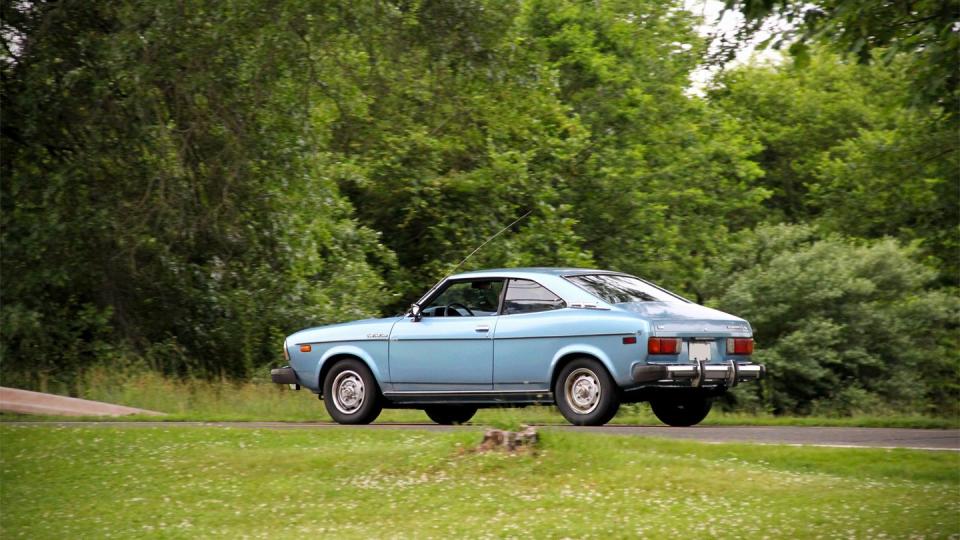Subaru FE Coupe Is Rare, but Spotted on a US Road

Small cars were just the ticket in the mean Malaise days of the late 1970s, and that's exactly what Subaru had in its lineup. Malcolm Bricklin's import gamble paid off, as Subaru navigated its way out of West Coast import obscurity and into the driveways of Americans who were not necessarily on the left coast.
The anonymously named DL/GL, of course, were part of the larger Leone lineup and entered production in the early 1970s, making their way stateside with what were basically trim names.
Offered as a two- and four-door sedan, as well as a four-door wagon and two-door coupe, these small cars brought front-wheel- and all-wheel-drive goodness to those who may not have wanted a domestic galleon, or those who just needed a reliable commuter.
The two-door sedan, we should note, looked very similar in profile to the coupe bodystyle seen here, with the two-door sedan featuring a more squared-off rear side window and a higher roof height.
The difference is... surprisingly subtle if you're not used to looking at Subarus from this era.
"Outside the DL Coupe looks like a racy sports car. But you won't have to race to the bank to keep it on the road," Subaru ad copy boasted.
"That's because its front-wheel-drive, 5-speed transmission, rack and pinion steering, and power assist front disc brakes give it the heart of a sports car."
It is perhaps debatable how much of a sports car the coupe really was with a 1.6-liter boxer four under the hood, with 67 hp on tap. But then again the coupe didn't weigh all that much by modern car standards, or the standards of the day.
The FE Coupe seen here in Connecticut, on the other hand, stood for Fuel Efficient, promising an EPA-rated 50 mpg on the highway and 33 mpg in the city, which it achieved via an increased compression ratio in the Subaru Exhaust Emission Control-Thermal and Thermodynamic Control (SEEC-T) engine and taller gears.
"Our new 5-Speed Subaru FE Coupe is the best thing to happen to the number 50 since the fifties," Subaru quipped.
Four- and five-speed manual transmissions were on the menu in the lineup, along with three-speed automatics, while cursive text on the front advertised FWD.
The DOT bumpers seemed to add several inches to the length of the models, while also certainly adding weight.
But better safe than sorry, right?
"An economy car has to work hard for a living. So Fuji Heavy Industries builds a Subaru to be able to handle the job with ease," Subaru observed in its dealership literature.
Like many other economy cars of the day, these did not really make it into the 1990s except for a few places with climate and roads conducive to that sort of thing. So while these coupes had pretty good survival rates in places like NorCal and Portland, elsewhere they faded off the roads by the late 1980s. And by now, so did their immediate successors.
As a result, this is one of those cars that largely exists in one of two types of conditions: In near-concours form, such as this example, or fully decomposed and sitting under 20 pounds of pine needles in someone's backyard. And among surviving examples, the FE is even rarer than others.
From this generation of Subarus as well as the next one, it has been mostly the Brat that has been preserved the most, to the point where you can find well-kept examples on sale at any given time. But a different fate befell sedans and station wagons, even though the AWD station wagon was certainly the flagship in Subaru's range at the time.

 Yahoo Autos
Yahoo Autos 